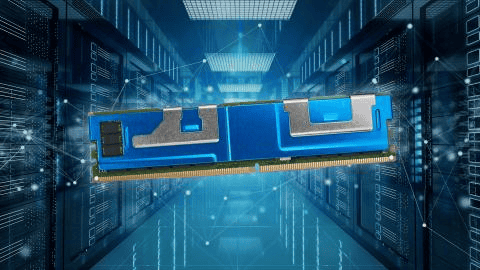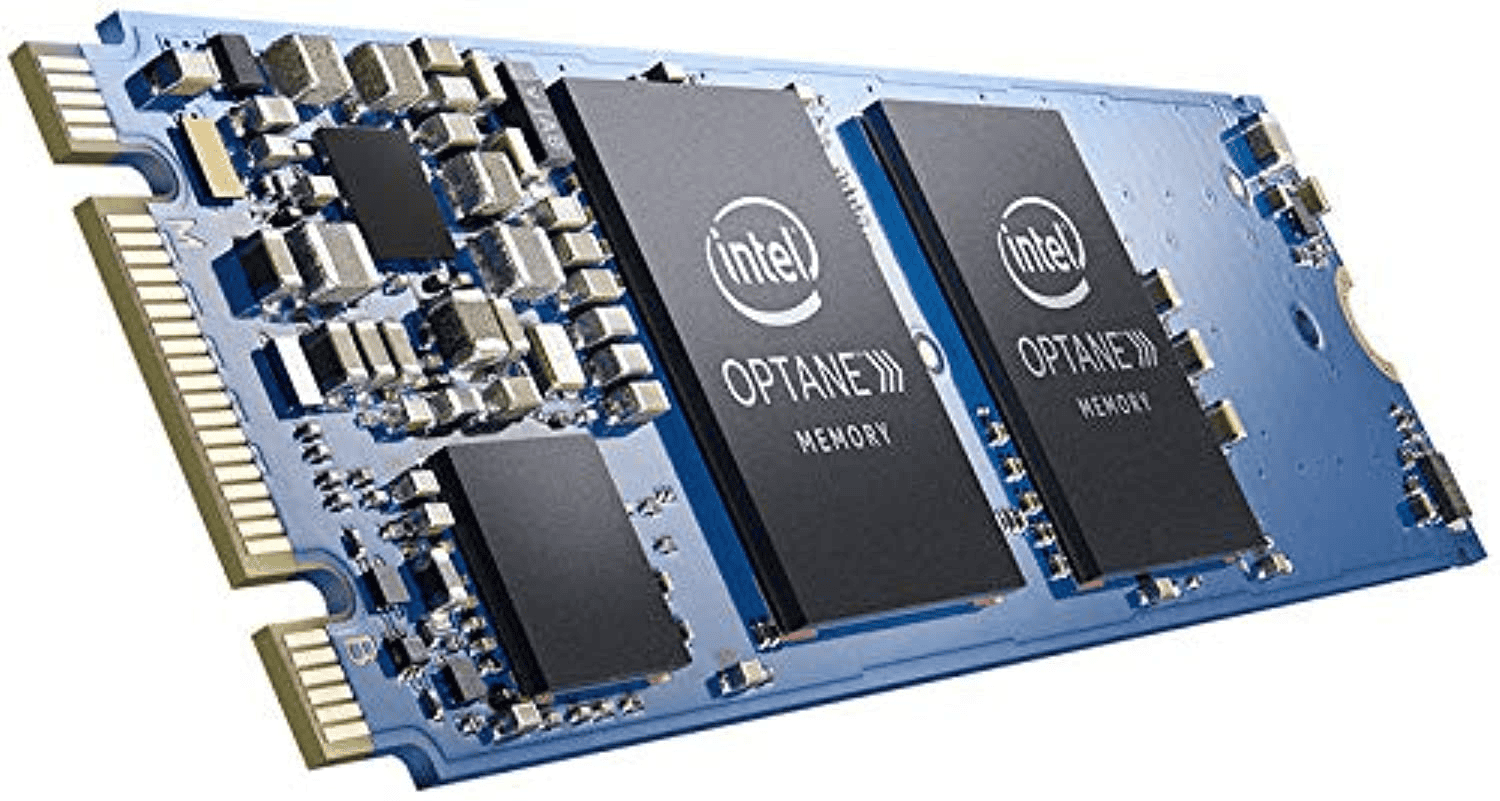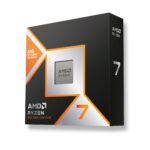Intel Optane DC Persistent Memory introduces a new approach to data storage and processing. This technology effectively bridges the gap between memory and storage, offering a unique combination of speed and persistence. Intel Optane DC Persistent Memory modules provide large-capacity, affordable, and persistent memory, enabling IT transformation to meet the demands of the data era. These modules fit directly into DIMM slots and work in conjunction with traditional DRAM.
They operate in two main modes: Memory Mode, which allows for volatile memory expansion, and App Direct Mode, designed for persistent memory applications. This flexibility lets you customize your system’s performance according to your specific workload requirements. The benefits of Intel Optane DC Persistent Memory are significant. It facilitates faster data access, improves virtual machine density, and enhances storage capacity. Users can expect notable performance improvements in memory-intensive workloads, database operations, and analytics tasks. Additionally, the persistence feature ensures that your data remains safe even during power loss events.
| Feature | Benefit |
|---|---|
| Large capacity | Expands memory footprint |
| Persistence | Data safe during power loss |
| Affordability | Lower cost per gigabyte than DRAM |
| Flexibility | Memory Mode and App Direct Mode |

Intel Optane DC Persistent Memory: A New Tier of Memory
Intel Optane DC Persistent Memory (DCPMM) is a groundbreaking technology that bridges the gap between DRAM and storage, offering a unique combination of performance, persistence, and capacity. It’s designed for data-centric workloads in data centers, enabling faster insights and improved efficiency.
How It Works
DCPMM is based on Intel’s 3D XPoint technology, which is a non-volatile memory that retains data even when power is lost. It sits on the memory bus alongside DRAM, creating a new tier of memory that’s larger, more affordable, and persistent.
- Memory Mode: In this mode, DCPMM acts as an extension of DRAM, providing a larger memory pool for the operating system and applications. DRAM acts as a cache for frequently accessed data, while DCPMM holds the larger dataset.
- App Direct Mode: This mode allows applications to directly access DCPMM as persistent storage. This enables faster access to data compared to traditional storage devices like SSDs, as data doesn’t need to be moved between memory and storage.
Benefits
- Increased Capacity: DCPMM enables significantly larger memory capacities per server, allowing you to handle larger datasets and run more virtual machines.
- Improved Performance: It offers faster access to data compared to traditional storage, accelerating applications and reducing latency.
- Persistence: Data is retained even during power outages, ensuring data integrity and faster system recovery.
- Affordability: DCPMM provides a more cost-effective way to increase memory capacity compared to DRAM alone.
Use Cases
DCPMM is ideal for a variety of data-centric workloads, including:
- In-Memory Databases: Accelerate database performance and handle larger datasets in memory.
- Virtualization: Increase VM density and improve performance with larger memory pools.
- High-Performance Computing: Handle massive datasets and accelerate scientific simulations.
- Financial Analytics: Analyze large financial datasets in real-time for faster insights.
- Artificial Intelligence: Train and deploy AI models more efficiently with larger memory capacity.
Compatibility
DCPMM is compatible with select Intel Xeon Scalable processors and platforms. It’s important to ensure that your system supports DCPMM before purchasing and installing it.
The Future of Memory
Intel Optane DC Persistent Memory represents a significant step forward in memory technology. It offers a unique combination of performance, persistence, and capacity that can transform how data centers operate and enable new possibilities for data-intensive applications. As technology continues to evolve, we can expect DCPMM to play an even greater role in shaping the future of computing.
Overview of Intel Optane DC Persistent Memory
Intel Optane DC Persistent Memory combines high capacity with data persistence. It bridges the gap between memory and storage offering new possibilities for data-intensive workloads.
Fundamentals of Persistent Memory
Intel Optane DC Persistent Memory uses 3D XPoint technology to create a unique memory tier. This non-volatile memory maintains data even when power is lost. It sits between DRAM and SSDs in the memory hierarchy.
Key features:
- Large capacity (up to 512GB per module)
- Lower cost per gigabyte than DRAM
- Byte-addressable like memory
- Persistence like storage
These characteristics make it ideal for applications that need fast access to large datasets. Databases in-memory analytics and AI workloads can benefit significantly from Optane DC Persistent Memory.
Generations and Variants
Intel has released two generations of Optane DC Persistent Memory:
- First Generation (Optane PMem 100 Series)
- Second Generation (Optane PMem 200 Series)
| Feature | PMem 100 | PMem 200 |
|---|---|---|
| Capacity | Up to 512GB | Up to 512GB |
| Bandwidth | Up to 6.5 GB/s | Up to 8.2 GB/s |
| Latency | ~350ns | ~220ns |
The 200 Series offers improved performance and endurance over its predecessor. Both generations are available in various capacities to suit different needs.

Memory Modes and Configuration
You can use Optane DC Persistent Memory in two primary modes:
- Memory Mode: Acts as volatile system memory extending RAM capacity.
- App Direct Mode: Provides persistent storage directly accessible by applications.
Memory Mode pairs Optane modules with DRAM to create a large memory pool. The DRAM acts as a cache for frequently accessed data. This mode requires no software changes but doesn’t offer persistence.
App Direct Mode allows applications to use Optane as persistent storage. This mode enables data persistence and requires software modifications to take full advantage of its capabilities.
You can also configure a mixed mode using both Memory and App Direct modes simultaneously. This flexibility allows you to optimize for specific workload requirements.
Hardware and Compatibility
Intel Optane DC Persistent Memory offers unique hardware features and compatibility with specific processors. This technology brings new possibilities for data storage and processing in enterprise environments.
Compatibility with Intel Xeon Scalable Processors
Intel Optane DC Persistent Memory works exclusively with Intel Xeon Scalable processors. The 100 Series is compatible with 2nd Generation Intel Xeon Scalable processors. The 200 Series supports 3rd Generation Intel Xeon Scalable processors.
These processors enable you to leverage Optane DC Persistent Memory’s full potential. They provide the necessary memory controller and firmware support. This compatibility ensures optimal performance for memory-bound workloads.
You can use Optane DC Persistent Memory in various server configurations. It works well with cloud service providers and on-premises data centers.
Form Factors and Hardware Encryption
Optane DC Persistent Memory comes in a 288-pin DDR4 DIMM-compatible form factor. Its dimensions are 133.35 x 31.25 mm. This allows for easy integration into existing server designs.
The modules support DIMM-to-DIMM pitch spacing down to 8.9 mm. Intel recommends a pitch of 9.4 mm for optimal performance. You can choose from different capacities to suit your needs.
Hardware encryption is a key feature of Optane DC Persistent Memory. It protects your data at rest without impacting performance. This encryption adds an extra layer of security for sensitive information.
| Feature | Specification |
|---|---|
| Form Factor | 288-pin DDR4 DIMM compatible |
| Dimensions | 133.35 x 31.25 mm |
| Recommended DIMM Pitch | 9.4 mm |
| Encryption | Hardware-level |
Applications and Performance
Intel Optane DC Persistent Memory enhances data-intensive workloads across various sectors. It offers unique benefits for AI, big data, databases, virtualization, and cloud computing.
Use Cases in AI and Big Data
Intel Optane DC Persistent Memory boosts AI and big data applications. It allows larger datasets to be processed in-memory, speeding up analytics and machine learning tasks.
For data analytics, it enables real-time processing of massive datasets. This leads to faster insights and decision-making. Companies can analyze customer behavior, market trends, and operational data more quickly.
In AI workloads, it supports larger neural networks and training datasets. This improves model accuracy and reduces training time. Researchers can experiment with more complex AI models that were previously impractical due to memory constraints.
| Use Case | Benefit |
|---|---|
| Data Analytics | Faster processing of large datasets |
| AI Training | Larger neural networks, reduced training time |
| Real-time Analytics | Quicker insights from streaming data |
Enhancements in In-Memory Databases
In-memory databases like SAP HANA greatly benefit from Intel Optane DC Persistent Memory. It provides a larger memory capacity at a lower cost than traditional DRAM.
This technology allows databases to store entire datasets in memory. It eliminates the need for frequent disk I/O operations. As a result, query performance improves significantly.
For analytics applications, it enables real-time data processing on larger datasets. Businesses can run complex queries on historical data without performance degradation.
The persistence feature also reduces database recovery time after system restarts. This improves overall system availability and reduces downtime.
Optimization for Virtualization and Cloud
Intel Optane DC Persistent Memory offers significant advantages for virtualization and cloud environments. It allows for higher VM density per server, improving resource utilization.
Cloud service providers can offer larger memory capacities to their customers at competitive prices. This is particularly useful for memory-intensive applications and big data workloads.
The technology supports quick provisioning of VMs with large memory allocations. It reduces the need for storage I/O, improving overall system performance.
For containerized applications, it enables faster startup times and supports more containers per host. This increases efficiency and reduces operational costs in cloud data centers.
Industry Impact and Future Innovations
Intel Optane DC persistent memory has revolutionized data center operations. It offers new possibilities for data storage and processing across various industries. This technology continues to evolve through collaborations and ongoing research.
Adoption across Verticals
Financial services have embraced Optane persistent memory for high-speed trading and real-time analytics. Banks use it to process transactions faster and enhance fraud detection systems.
Healthcare organizations leverage the technology for quick access to patient records and genomic data analysis. This speeds up diagnoses and treatment planning.
Cloud service providers use Optane to boost virtual machine density and improve database performance. This allows them to serve more customers with existing hardware.
| Industry | Key Benefits |
|---|---|
| Finance | Faster trading, improved analytics |
| Healthcare | Quick data access, genomic analysis |
| Cloud | Higher VM density, better database performance |
Intel’s Collaboration with SNIA and Other Entities
Intel works closely with the Storage Network Industry Association (SNIA) to develop standards for persistent memory. This ensures compatibility across different platforms and operating systems.
The company also partners with ISVs and OSVs to optimize software for Optane technology. These collaborations have led to performance improvements in databases, virtualization platforms, and analytics tools.
Intel contributes to the ACPI specification, defining how operating systems interact with persistent memory. This work helps standardize security features like cryptographic erase.
Looking Ahead to Next-Generation Technologies
Intel continues to innovate with its Optane persistent memory 200 series. This newer generation offers higher capacities and improved performance.
Research is ongoing into enhancing native persistence capabilities. This could lead to even faster data recovery after power loss.
Future developments may focus on improving security metadata handling. This would strengthen data protection in multi-tenant environments.
Intel is exploring ways to reduce latency further and increase bandwidth. These advancements could open up new use cases in AI and machine learning applications.
Frequently Asked Questions
Intel Optane DC Persistent Memory offers unique benefits and capabilities compared to traditional memory solutions. This technology integrates with existing systems and provides performance improvements across various applications.
What performance benefits does Intel Optane DC Persistent Memory provide over traditional DRAM?
Intel Optane DC Persistent Memory delivers high-performance intelligence with larger capacity at a lower cost than DRAM. It retains data even when powered off, unlike DRAM. This technology offers faster data access and processing for data-intensive workloads.
It also allows for larger in-memory databases and analytics. This can significantly speed up applications that rely on quick data retrieval.
Can Intel Optane Persistent Memory be used in conjunction with standard RAM?
Yes, Intel Optane Persistent Memory can work alongside standard RAM. It complements DRAM by providing additional memory capacity and persistence.
This combination allows you to optimize your system for both performance and capacity. You can use DRAM for frequently accessed data and Optane for larger datasets that benefit from persistence.
What are the differences between the 100, 200, and 300 Series of Intel Optane Persistent Memory?
Each series of Intel Optane Persistent Memory offers improvements in performance and features. The 200 Series provides higher bandwidth and lower latency compared to the 100 Series.
The 300 Series further enhances these capabilities. It supports the latest Intel Xeon Scalable processors and offers even greater performance for data-centric workloads.
How does Intel Optane DC Persistent Memory integrate with Windows 10 environments?
Intel Optane DC Persistent Memory integrates with Windows 10 through specialized drivers and software. This allows Windows to recognize and utilize the persistent memory alongside traditional storage and RAM.
You can configure Optane memory in different modes to suit your needs. These include Memory Mode for expanded volatile memory and App Direct Mode for persistent storage.
What are the implications of disabling Intel Optane memory in a system setup?
Disabling Intel Optane memory can impact system performance. You may experience slower data access speeds and reduced overall system responsiveness.
If you’ve been using Optane in persistent mode, disabling it could result in data loss. Make sure to back up any important data before making changes to your Optane configuration.
What considerations should be made when planning to upgrade SSDs with Intel Optane technology?
When upgrading to SSDs with Intel Optane technology, consider your system’s compatibility. Check if your motherboard and processor support Intel Optane memory.
You should also evaluate your workload requirements. Optane SSDs excel in scenarios with frequent small, random reads and writes. For large sequential operations, traditional SSDs might be more cost-effective.
| Consideration | Description |
|---|---|
| Compatibility | Ensure system supports Intel Optane |
| Workload Type | Assess if workload benefits from Optane |
| Capacity Needs | Determine required storage capacity |
| Budget | Compare costs with traditional SSDs |
| Data Migration | Plan for transferring existing data |







